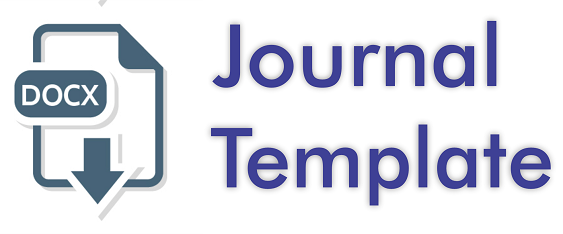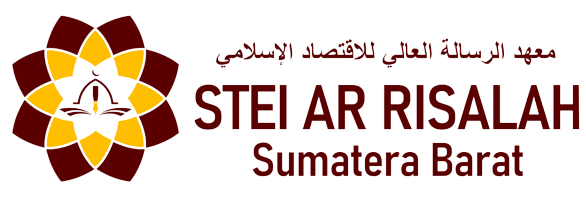Analisis Persentase Bagi Hasil Muzara’ah Pertanian Padi Dalam Upaya Peningkatan Pendapatan Masyarakat Penggarap Melalui Tinjauan Tiga Indikator Maqashid Syariah (Studi Kasus: Petani Padi Di Desa Klaten)
DOI:
https://doi.org/10.59107/ri.v2i2.47Keywords:
Percentage, Muzara'ah, Rice Cultivator, Maqashid SyariahAbstract
Indonesia is renowned as one of the largest rice producers in Asia, attributed to its fertile land conditions, encompassing 88.4%. This study aims to examine the profit-sharing percentage in Muzara'ah rice farming to enhance income for landowners and cultivators in the Klaten Regency. Employing a mixed-method approach, combining quantitative and qualitative methods, the research utilizes both primary and secondary data analyzed through Ordinary Least Square (OLS) methodology. Data collection involves questionnaires, documentation, and literature reviews with a sample size of 30 individuals. The study focuses on a population of 30 individuals utilizing a profit-sharing system under the Muzara'ah agreement in Klaten Regency. The Partial t-Test results indicate that the Muzara'ah Profit-Sharing Percentage significantly influences three Shariah Maqashid indicators positively. However, efforts to increase community income do not impact the three Shariah Maqashid indicators significantly. The F-Test suggests that some variables do not have a significant impact. Furthermore, the R2 Test reveals a value of 0.134, signifying that 13.4% of the Muzara'ah Profit-Sharing Percentage has the most substantial influence on the three Shariah Maqashid indicators, while the remaining 86.6% is attributed to other contributing variables.
Downloads
References
Banguno, I. F., Yatim, H., & Zaenuddin, R. A. (2021). Analisis Pendapatan dan Kelayakan Usahatani Padi Sawah di Desa Tatakalai Kecamatan Tinangkung Utara. CELEBES Agricultural, 1(2), 68–75. https://doi.org/10.52045/jca.v1i2.42
Lubis, D. (2017). Analisis pendapatan petani penggarap dengan akad. 2(3), 310–315.
Roidah, I. S. (2015). Analisis pendapatan usahatani padi musim hujan dan musim kemarau (Studi kasus di Desa Sepatan Kecamatan Gondang Kabupaten Tulungagung). Jurnal Agribisnis Fakultas Pertanian Unita, 11(13), 45–55. https://journal.unita.ac.id/index.php/agribisnis/article/download/36/32
Saleh, K. (2022). Respon Petani Padi Sawah terhadap Program Budidaya Padi Sistem Jajar Legowo di BPP Tegalkunir, Kabupaten Tangerang. Jurnal Penyuluhan, 18(02), 196–207. https://doi.org/10.25015/18202239868
Sugeng Rachmat, Rohmana Dede, & Andang Nurviyanti. (2021). Sistem Bagi Hasil Akad Muzara’ah pada Masyarakat Petani Penggarap dan Pemilik Lahan di Kel. Batupapan, Kec. Makale, Kab. Tana Toraja. Indonesian Journal Of Business Analytics, 1(2), 211–226.
Wahyu, A. R. M. (2019). Sistem Penggarapan Lahan Pertanian Masyarakat: Perspektif Ekonomi Islam. Al-Azhar Journal of Islamic Economics, 1(1), 1–15. https://doi.org/10.37146/ajie.v1i1.9
Downloads
Published
Issue
Section
License
Copyright (c) 2023 RISALAH IQTISADIYAH: Journal of Sharia Economics

This work is licensed under a Creative Commons Attribution 4.0 International License.
License
The non-commercial use of the article will be governed by the Creative Commons Attribution license as currently displayed on http://creativecommons.org/licenses/by/4.0/. This licence allows the user to distribute, remix, tweak, and build upon the licensed work, including for commercial purposes, as long as the original author is credited.
Author’s Warranties
The author warrants that the article is original, written by stated author/s, has not been published before, contains no unlawful statements, does not infringe the rights of others, is subject to copyright that is vested exclusively in the author and free of any third party rights, and that any necessary written permissions to quote from other sources have been obtained by the author/s.
User Rights
Under the Creative Commons Attribution license, the author(s) and users are free to share (copy, distribute and transmit the contribution).
Rights of Authors
Authors retain the following rights:
- copyright, and other proprietary rights relating to the article, such as patent rights,
- the right to use the substance of the article in future own works, including lectures and books,
- the right to reproduce the article for own purposes, provided the copies are not offered for sale,
- the right to self-archive the article.
Co-Authorship
If the article was prepared jointly with other authors, the signatory of this form warrants that he/she has been authorized by all co-authors to sign this agreement on their behalf, and agrees to inform his/her co-authors of the terms of this agreement.
Termination
This agreement can be terminated by the author or RISALAH IQTISADIYAH: JOURNAL OF SHARIA ECONOMICS upon two months’ notice where the other party has materially breached this agreement and failed to remedy such breach within a month of being given the terminating party’s notice requesting such breach to be remedied. No breach or violation of this agreement will cause this agreement or any license granted in it to terminate automatically or affect the definition of RISALAH IQTISADIYAH: JOURNAL OF SHARIA ECONOMICS.
Royalties
This agreement entitles the author to no royalties or other fees. To such extent as legally permissible, the author waives his or her right to collect royalties relative to the article in respect of any use of the article by RISALAH IQTISADIYAH: JOURNAL OF SHARIA ECONOMICS or its sublicensee.
Miscellaneous
RISALAH IQTISADIYAH: JOURNAL OF SHARIA ECONOMICS will publish the article (or have it published) in the Journal, if the article’s editorial process is successfully completed and RISALAH IQTISADIYAH: JOURNAL OF SHARIA ECONOMICS or its sublicensee has become obligated to have the article published. RISALAH IQTISADIYAH: JOURNAL OF SHARIA ECONOMICS may conform the article to a style of punctuation, spelling, capitalization and usage that it deems appropriate. The author acknowledges that the article may be published so that it will be publicly accessible and such access will be free of charge for the readers. RISALAH IQTISADIYAH: JOURNAL OF SHARIA ECONOMICS will be allowed to sublicense the rights that are licensed to it under this agreement.



.png)
.png)






